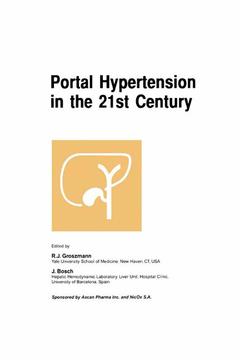Description
Portal Hypertension in the 21st Century, Softcover reprint of the original 1st ed. 2004
The proceedings of a symposium sponsored by Axcan Pharma Inc. and NicOx S.A., held in Montrél, Canada, April 2–4, 2004
Coordinators: Groszmann R.J., Bosch J.
Language: English
Subject for Portal Hypertension in the 21st Century:
Publication date: 10-2012
370 p. · 16x24 cm · Paperback
Publication date: 08-2004
370 p. · 15.5x23.5 cm · Hardback
Description
/li>Contents
/li>
Portal hypertension is the most important complication of a great variety of both acute and chronic liver diseases. Nevertheless, hepatic cirrhosis is the most frequent cause of portal hypertension. Gastrointestinal bleeding due to rupture of oesophageal varices is, without doubt, the most severe complication of portal hypertension. At present, great advances are being made in the pathophysiology and in the development of new therapeutic tools for controlling and preventing this severe clinical event.
This book contains the papers presented and discussed during the Symposium on 'Portal Hypertension in the 21st Century', held in Montréal, Canada, in April 2004, and sponsored by Axcan Pharma Inc. and NicOx S.A. There are eight sections covering basic mechanisms, new drugs, prevention and current treatment of variceal bleeding, prevention of recurrent bleeding and hepatic hemodynamic monitoring.
An international faculty of authors have contributed chapters at an outstanding scientific level which will be vital reading for scientists and clinicians alike.




